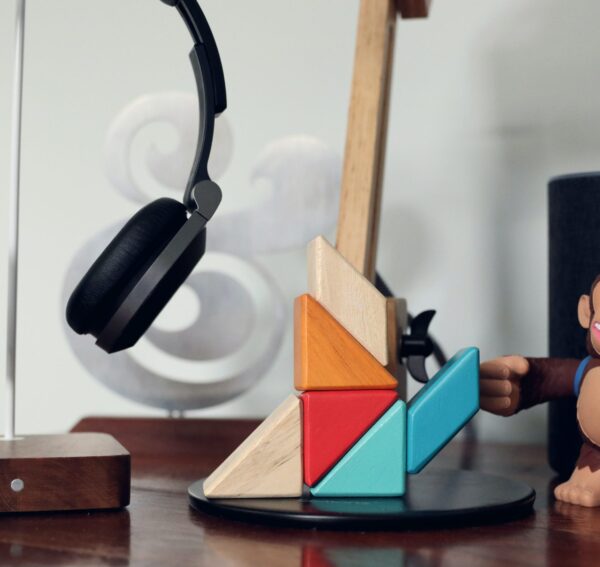Babies use baby talk with artificial objects, and ‘real talk’ with natural ones: study

A new study, led by the University of Portsmouth, has looked at the relationship between the language babies use and the status of the object they are interacting with, finding that infants are significantly more likely to use “baby talk” during interactions that involve artificial objects compared to natural ones.
Objects play an important role in the way babies learn to speak. In the initial stages of learning to speak, babies communicate with protophones – sounds resembling squeals, growls or short word-like noises such as “da,” “aga” and “ba”.
These protophones are considered the foundations of speech, as they eventually evolve into full language. Objects play an important role in this process, as the more vocalisation an object encourages, the closer a young child is to talking.
During the study researchers looked at the relationship between protophones and things typically found at home to assess their importance for developing language skills.
To do this, the team observed how often children aged between 4 and 18 months who live in Zambia vocalised when using toys and household items, and then compared it to how they interacted with natural objects.
They discovered the amount of protophones produced by the younger infants was significantly higher when engaging with human-made objects, compared to sticks, leaves, rocks and bird feathers.
They also found the children were more interested in household items v such as mugs, shoes, and pens – when given the choice between them and natural objects.
“Our findings suggest that object features have an impact on the way in which young children communicate,” said lead author Dr Violet Gibson.
“Here, we observed that natural objects were less likely to encourage infants to produce protophones, and as a consequence they may not promote language skill development as much as artificial objects.”
Co-author and Developmental Psychologist Dr Eszter Somogyi added: “It is important to understand to what extent protophones are promoted in a natural environment from an evolutionary perspective, because of their ties to language skills and development.
“Some argue that vocal language about human-made tools may have led to a number of important advancements for our ancestors, including speech evolution and a surge in manufacturing more sophisticated objects.”
The study also examined whether children show more social gazing when using natural or artificial objects, as it’s one of the first avenues of early communication. The researchers found differences in the infants’ looking behaviours between the two object types, suggesting that object features also shape nonvocal communication.
“The infants in this study gazed at the mothers significantly more often when using natural objects compared to the household items, particularly at a young age,” Dr Gibson explained.
“It might be because they’re far less interested in natural objects, and look to their parents to assess their value.”
The University of Portsmouth team also observed similar behaviours in chimpanzees. A new study, published in Animal Cognition, found evidence they use objects in diverse ways to communicate with each other, and this may be shaped by social factors.
“This opens an interesting new door in language evolution research, and hopefully what we learned will contribute to future research on communication across different species and human cultures,” said fellow author Dr Marina Davila Ross.
To access the study in full please see here.
Popular

Quality
Practice
Provider
Research
Workforce
Honouring the quiet magic of early childhood
2025-07-11 09:15:00
by Fiona Alston

Policy
Practice
Provider
Quality
Workforce
Minister Jess Walsh signals urgent action on safety and oversight in early learning
2025-07-11 08:45:01
by Fiona Alston

Workforce
Policy
Quality
Practice
Provider
Research
The silent oath: Why child protection is personal for every educator
2025-07-17 09:00:31
by Fiona Alston











